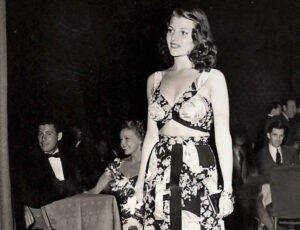The “Protect Your Rights” (P.Y.R) chair, created by Swedish furniture brand Blä Station in collaboration with designer David Ericsson, is more than just a piece of furniture—it is a provocative statement about design integrity and authenticity. Launched at the Stockholm Furniture Fair 2025 during the Stockholm Design Festival, this minimalist yet symbolic chair aims to spark conversations about the widespread issue of design copying.
In a world where fast furniture, imitation products, and intellectual property disputes have become increasingly common, the P.Y.R chair challenges both industry professionals and consumers to rethink their values regarding originality in design. Through its simplicity, materiality, and embedded message, the chair acts as a metaphor for the unseen efforts behind true craftsmanship.
This essay will delve into the meaning, craftsmanship, and impact of the P.Y.R chair, examining how it forces the design world to confront issues of authenticity, creativity, and ethics.
The Message of “Protect Your Rights”
The name “Protect Your Rights” is a direct reference to the struggle designers face in safeguarding their creative work from unauthorized replication. Ericsson and Blä Station developed this piece not only as functional furniture but also as a protest against the dilution of originality in modern design.
At a time when cheap replicas flood the market, undercutting the hard work of legitimate designers, the P.Y.R chair urges us to recognize the importance of:
• Intellectual property protection in furniture design
• The hidden process of craftsmanship that goes beyond just the final product
• The impression of mass-produced copies on the design industry
A metal plate affixed to the backrest subtly reinforces this idea, featuring the chair’s name and a statement about its ideological purpose. This simple but powerful detail serves as a constant reminder that design is more than what meets the eye—it’s the result of years of knowledge, testing, and refinement.
Why Design Originality Matters
The discussion surrounding design plagiarism has been a long-standing debate in the furniture industry, especially as technology and globalization have made it easier for counterfeit versions of iconic designs to be mass-produced.
Many well-known furniture brands and designers—such as Arne Jacobsen, Charles & Ray Eames, and Hans Wegner—have had their works copied and sold at lower prices, often compromising the quality and integrity of the original. The P.Y.R chair, therefore, serves as a wake-up call, emphasizing that:
• True design is an intellectual and artistic pursuit, not just a product.
• Consumers should be encouraged to support original designers rather than purchasing cheap knock-offs.
• Authenticity is not just about aesthetics; it reflects innovation, research, and ethical production.
The Minimalist Approach
Ericsson describes the P.Y.R chair as a “celebration of simplicity”, aligning with the Scandinavian tradition of functional, understated design. While the details of the chair’s structure remain intentionally vague, its core elements reflect a deep respect for material and craftsmanship.
Constructed from pine plywood, the chair embraces:
• A raw, natural aesthetic that highlights the beauty of its material.
• A sturdy and durable build, designed to last for years rather than being disposable.
• A minimalist silhouette that embodies efficiency and honesty in design.
This simplicity is not a sign of a lack of effort—rather, it is a deliberate move to prove that originality doesn’t need to be complex to be meaningful.
Materiality and Functionality
The use of pine plywood is significant in the context of sustainable and ethical furniture design. Unlike many imitation products that rely on cheap, low-quality materials, the P.Y.R chair is crafted with:
• Longevity in mind, ensuring that it remains functional and aesthetically pleasing for years.
• A focus on sustainability, reinforcing the idea that original, well-crafted pieces contribute to a more responsible consumer culture.
By highlighting the importance of material selection and thoughtful design, Ericsson’s work challenges the disposable nature of fast furniture, which often values affordability over durability.
The rapid growth of e-commerce and mass production has made it increasingly easy for unauthorized reproductions of designer furniture to be sold at a fraction of the cost of the original.
• Online marketplaces like Amazon, Alibaba, and Wayfair have been flooded with copies of iconic furniture pieces.
• The furniture industry, much like the fashion industry, struggles to prevent counterfeits from devaluing authentic design.
• Ethical designers and studios are often forced into costly legal battles to defend their work.
The P.Y.R chair serves as a symbolic rebellion against this trend, urging both designers and consumers to take a stand against mass-produced imitations.
Recognizing the Invisible Work Behind Original Design
Blä Station emphasizes that “design and product development are not what you see—you only see the result of a long and costly process.”
This statement reminds us that:
• Creating an original design involves research, prototyping, and testing, which are rarely considered when purchasing a copy.
• Intellectual labor is just as valuable as physical labor, and both should be protected.
• Mass-market replicas devalue the creative industry, making it harder for independent designers to sustain their craft.
Conversations Sparked by the Exhibit
Since its launch at Stockholm Design Festival 2025, the P.Y.R chair has provoked important discussions among industry professionals, students, and consumers alike.
• The ethical responsibility of consumers when choosing between authentic and copied designs.
• The need for stronger legal protections for designers and independent creators.
• The role of minimalism in making a powerful design statement.
The Future of Original Design
The P.Y.R chair serves as both a functional piece of furniture and an artistic statement, reinforcing the idea that design should be respected as an art form, not just a commodity.
With ongoing legal and ethical debates about intellectual property in the design world, pieces like the P.Y.R chair play a crucial role in shaping the future of:
• How designers protect their work.
• How consumers make ethical choices.
• How the industry defines authenticity in an increasingly digital and globalized world.
More Than Just a Chair—A Movement for Authenticity
The “Protect Your Rights” (P.Y.R) chair by Blä Station and David Ericsson is a landmark statement on design authenticity, urging us to rethink our relationship with originality, craftsmanship, and ethical consumption.
By embracing simplicity in form and complexity in meaning, the chair successfully challenges:
• The mass reproduction of iconic designs.
• The undervaluation of intellectual and creative labor.
• The ethical dilemmas surrounding cheap, mass-produced furniture.
As the design industry continues to evolve, the P.Y.R chair stands as a testament to the power of originality, reminding us that true creativity cannot be replicated—it must be respected, protected, and celebrated.
No comments yet.








